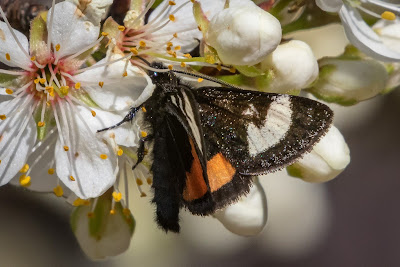 |
| The seed heads of Illinois Bundleflower (Desmanthus illinoensis) contain nutritious seeds that are the favorite of Bobwhite Quail. |
Often used as an informal figure of speech meaning to deteriorate or go downhill, ‘gone to seed’ can have a negative connotation. But each seed contains a new beginning: a tiny plant just waiting for the right conditions such as water, warmth, and a good location, to germinate and grow. Seeds and seed heads form fascinating shapes, varying sizes, and intricate patterns, often adorning the fall and winter landscape.
 |
| Texas Star or Lindheimer Daisy (Lindheimera texana) has a five-pointed seed head in the shape of a star. |
Plants have many ways of dispersing their seeds, and most have evolved over millions of years. While many of the methods are tried and true, certain seeds have developed in very particular ways to take advantage of such methods, and some plants only release their seeds in response to specific triggers.
 |
| The feathery seed heads of Scarlet Clematis resemble small galaxies. |
Wind helps seeds float or flutter away, often aided by seed structures such as thin wing extensions or long, feathery tails like those on the endemic Scarlet Clematis (Clematis texensis). Texas Bluebonnets (Lupinus sp.) employ the expulsion or explosion method, where the small, pebble-like seeds are forcibly expelled when the dried pods twist open in the warm sun. Similarly, Flame Acanthus (Anisacanthus quadrifidus var. wrightii) has hood-shaped capsules enclosing seeds attached to a hooked stalk, ejecting the seed from the capsule when it dries and breaks open.
 |
| The hood-shaped seed capsule of Flame Acanthus. |
Gravity plays a part in many plants seed dispersals, where weighty seeds fall off the plant and roll to a new location. The best example of this are the round, heavy fruits that simply fall off a plant when ripe, such as those on Mexican Plum (Prunus mexicana) or Texas Persimmon (Diospyros texana). If the fruits have a tough outer shell, they may travel some distance from the parent plant, and if they have a soft skin, they may break open where they fall and scatter the seed or seeds within.
 |
| Mexican plums are a favorite food of wildlife. |
Some plants produce very light seeds, seeds with buoyant fluff, or seeds with air trapped in them, so they can float away from the parent plant that grows in or around water, like Common Buttonbush (Cephalanthus occidentalis) or Black Willow (Salix nigra) or Eastern Cottonwood (Populus deltoides). Others employ the assistance of animals, which can come in the form of seed or fruit eating (where the seed can pass undigested through the animal), seed caching or burying, or seed transportation. Common examples of seed and fruit eating include Cedar Waxwings and American Robins consuming juniper and yaupon berries, and seed burying is a common practice of both ground and tree squirrels, who eat and cache acorns. Often unbeknownst to the animal, some seeds can be covered with tiny hooks or spines that catch on a passing animal’s fur, eventually transported to and rubbed off in another location.
 |
| The cottony seeds of an Eastern Cottonwood. |
This fall and winter, let the seeds linger, at least until early spring. Not only do they provide much needed food for wildlife, but leaving them allows for some beautiful and mysterious patterns in your winter landscape, and the promise of renewing the cycle of life that begins again each spring!










































